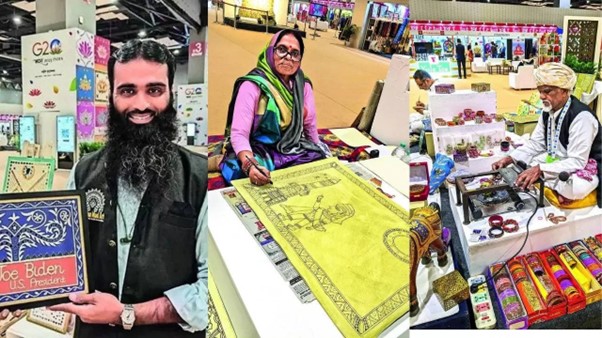Bharat Mandapam, the venue that hosted the G-20 Summit, featured a series of exhibitions that highlighted India’s rich cultural heritage, artistic creations, and technological innovations.
The 'Culture Corridor-G20 Digital Museum' was a remarkable showcase of the shared heritage of G-20 member nations and invitee countries. Among the objects of cultural significance on display were a copy of the Magna Carta, the renowned charter of rights from the United Kingdom, a 15th-century bronze statue of Belvedere Apollo from Italy, and an 18th-century Fahua lidded jar from China.
A digital museum was also part of the exhibition, with France contributing the iconic painting 'Mona Lisa,' Germany featuring 'Gutenberg’s Bible,' and Mexico sharing a statue of the deity 'Coatlicue.' This digital museum aimed to create a "museum in the making."
Submissions were sought from G-20 countries and nine guest nations in five categories, including objects of cultural significance (as physical displays), iconic cultural masterpieces (as digital displays), intangible cultural heritage (digital displays), natural heritage (digital displays), and artifacts related to democratic practices (physical or digital displays).
The exhibition also introduced a 12-foot digital cube that presented iconic masterpieces through anamorphic content. This cube celebrated objects related to democratic practices throughout history.
India's contributions to the exhibition included the ancient text Panini’s Ashtadhyayi, parts of the Rig Veda, and, in the national heritage category, the Himalayas.
The 'Digital India Experience Zone,' located in halls 4 and 14, offered visitors insights into India's technological advancements. It showcased key initiatives of the Digital India program such as Aadhaar, DigiLocker, UPI, eSanjeevani, DIKSHA, Bhashini, ONDC, and Ask GITA among others. The zone also included displays of MyGov, CoWIN, UMANG, JanDhan, e NAM, GSTN, FastTag, and more. The 'RBI’s Innovation Pavilion' in the same hall showcased cutting-edge financial technologies and their potential to transform the financial landscape.
In Hall number 3, the 'Crafts Bazaar' exhibited handicraft products from various regions of India, with a special focus on 'One District One Product' and GI-tagged items. Delegates had the unique opportunity to purchase locally sourced products. Approximately 30 States and Union Territories, along with organizations like the Khadi Village and Industries Commission and TRIFED, participated in the Crafts Bazaar.






